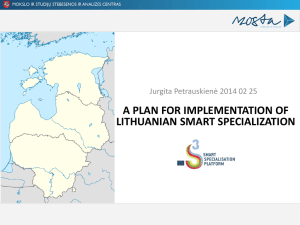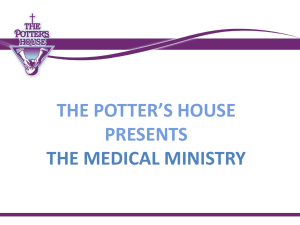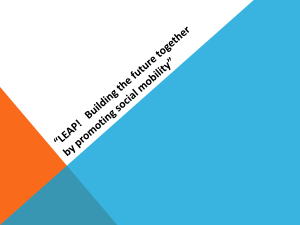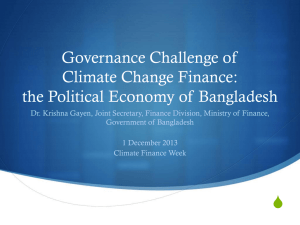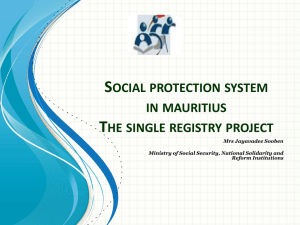Devolution, Governance & Health
advertisement
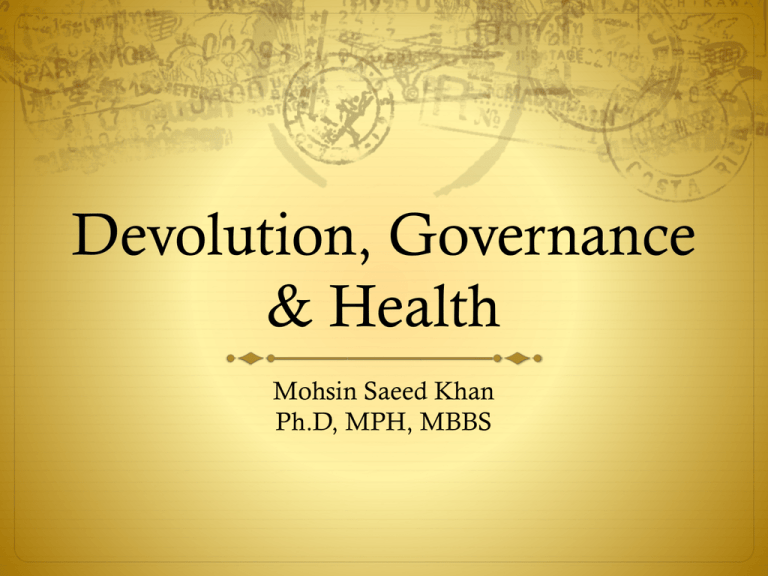
Devolution, Governance & Health Mohsin Saeed Khan Ph.D, MPH, MBBS Health Outcomes Numbers/annum Newborn births 4,773,000 Newborn deaths 272,330 Infant deaths 377,440 Under-five deaths (includes newborn and infant deaths) 473,000 Number of Infants Born Low-Birth-Weight 906,870 Number of Maternal deaths 23,865 Source PDHS 2006-2007 Total Public Sector Expenditure in Billions (Rupees) 90 80 70 60 50 40 30 20 10 0 Per Capita expenditure on Health in Pak Rupees 500.0 450.0 400.0 350.0 300.0 250.0 200.0 150.0 100.0 50.0 0.0 Health Expenditure as % of GDP 0.8 0.72 0.7 0.6 0.5 0.59 0.58 0.57 0.57 0.57 0.51 0.57 0.56 0.54 0.4 0.3 0.2 0.1 0 0.23 0.27 Health system assessment Approach, USAID Devolution Road Map Ministry of Health since 1970 2001 under the Local Government Ordinance; Province to Districts July 1, 2011, 18th Constitutional Amendment abolished seven federal ministries including Ministry of Health and transferred their roles to other federal ministries, divisions, and the provinces. Devolution Road Map vacuum as the devolved functions were not detailed out in any plan of action. The functions that have been retained at the federal level were distributed to different ministries without setting up a coordination mechanism. The Federal Ministry of Health Till June 30, 2011, MoH responsible for (i) stewardship functions, including national policy and planning; (ii) regulation and standardization including pharmaceutical; (iii) medical Education; (iv) research and information; (v) central health establishment and hospitals; and (vi) health care provision by managing preventive and infectious disease control (eleven vertical programs), curative health care through tertiary care. Fragmentation 1. Planning and Development Division, 2. Economic Affairs Division, 3. Capital Authority Development Department, 4. Ministry of Inter Provincial Coordination, 5. Ministry of National Regulations and Services, 6. Cabinet Division, 7. Federal Bureau of Statistics, and 8. Provinces. Provinces Health Strategies in Khyber Pakhtunkhwa, Sindh and Punjab Vertical Program Management without ownership Programmatic Challenges Issues of coverage (scope & scale) Poor access to health services Non-availability of adequate human resource Population growth Low allocations for health Weak inter-sectoral interventions Duplication of efforts Service & Performance Challenges Financial instability No accountability for poor performance Political interference Issues of equity Skilled HR Confusion, Chaos & Collapse coordination, international relationships, national and cross border surveillance, national information on health, international reporting coordination with and among provinces, donor coordination, financial forecasting and resource mobilization, and quality assurance Actors Politicians – Out Focused Beurocrats – Input Focused Technocrat – Process oriented Research & Development Specialists / Institutions – Driven by TORs Donors – Guided by their own sets of priorities So where do we want to go Vision !!!!!!!!! Not on priority list Burden of Disease (outcome) Not in the planning process Fiscal Space Management systems and organizational structures What is beyond MDGs IK IK Syndrome On “bottlenecks” Remember that in bottles, the neck is always on the top! Insight from a blind woman “There is nothing more pathetic than a man with eyesight but has no vision.” Our best thinking got us here. The problems that we face cannot be solved by the same level of thinking that created them. Albert Einstein Way Forward Embrace Error Redefine Roles Deliver Services Mobilize Resources Unpack Research THE WISDOM OF TAO XVII RULERS Of the best rulers The people only know that they exist, The next best they love and praise, The next they fear; And the next they revile. When they do not command the people's faith, Some will lose faith in them, And then they resort to oaths! But of the best when their task is accomplished, their work done, The people all remark, "We have done it ourselves." Source: The Wisdom of China and India by Lin Yuntang

